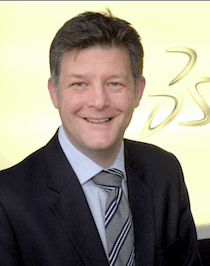The business of smart cities is innovating for a more sustainable future

Stephen Chadwick, Dassault Systèmes
The World Cities Summit in Singapore explored how cities can better govern and build up resilience through policy, technology and social innovations. City leaders and planners sought to look for ways to create and integrate innovative urban solutions for a more sustainable future, writes Nigel Chadwick, the managing director for EuroNorth at Dassault Systèmes.
The National Research Foundation of Singapore announced that together with Dassault Systèmes it will develop the first, fully functional 3D model of an entire country. The 5.3 million population city state is developing as a 3DEXPERIECity aiming to create a digital twin virtual city model that enables urban planners to digitally study and test ideas.
In technology terms cities around the world are getting smarter as ubiquitous broadband connects metropolitan people and things with embedded sensors.
India for example is developing 100 smart cities and calling in European technology, resources and investment to help it unlock the country’s economic potential. British innovation and talent are part of the ambitious programme and our government is promoting UK expertise there. In a recent interview Indian Prime Minister Narendra Modi said that European companies and “India are made for each other.” He added that while we have the resources, “India has the need and the market.”
The EU defines a smart city as, “A place where traditional networks and services are made more efficient with the use of digital and telecommunication technologies, for the benefit of its inhabitants and businesses.”
And that business covering energy, mobility, healthcare, environment, commerce and industry, resource management and communications is worth trillions of pounds. Factor in the smart home and security markets and the potential for business expansion is virtually infinite.
One of the deftest movers in the smart city drive is BMW. Its iSeries electric-vehicles can be used as energy-buffers when integrated into a smart grid. This way BMW can interface with energy networks and could potentially diversify into the energy management businesses over the coming decades.
In 30 years the human population will have reached 9 billion, with 75% living in cities. The connectivity of people with their city will have unknown outcomes. Our task is to progress technology and sustainable solutions to build good foundations for the next generations. Isaac Newton said we stand on the shoulders of giants. People in the future may not consider us giants but they will mostly be living in our legacy. It is important to use our academic and professional capital to meet the urban challenges that we face. That way, together, we can find the right innovations and solution for us all.
